
Iron and zinc deficiencies in citrus
Summary
Citrus trees are demanding feeders and are prone to many disorders related to mineral nutrition. In New South Wales, citrus can become deficient in essential elements usually obtained from the soil. Iron and zinc are two of these.
Iron deficiency
Symptoms
The younger leaves are light green to pale yellow (Figure 1) with a network of darker green veins. In general, leaf size is normal and the shoots are not shortened. In severe cases the leaves become very pale, even whitish, and the colour of the smaller veins fades until only a little green remains in the midrib. Dieback occurs, little or no fruit is carried and new growth is poor (Figure 2).
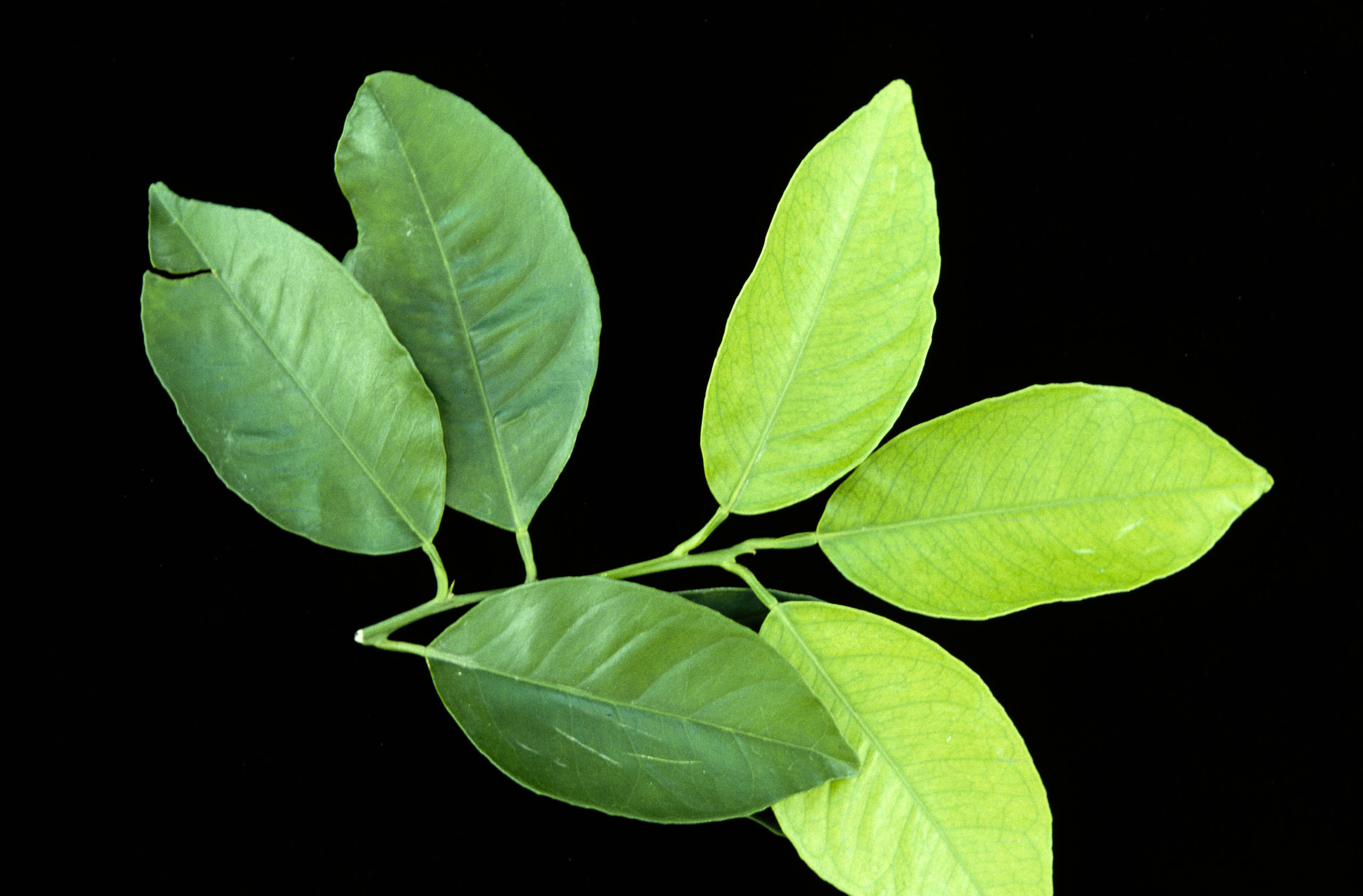
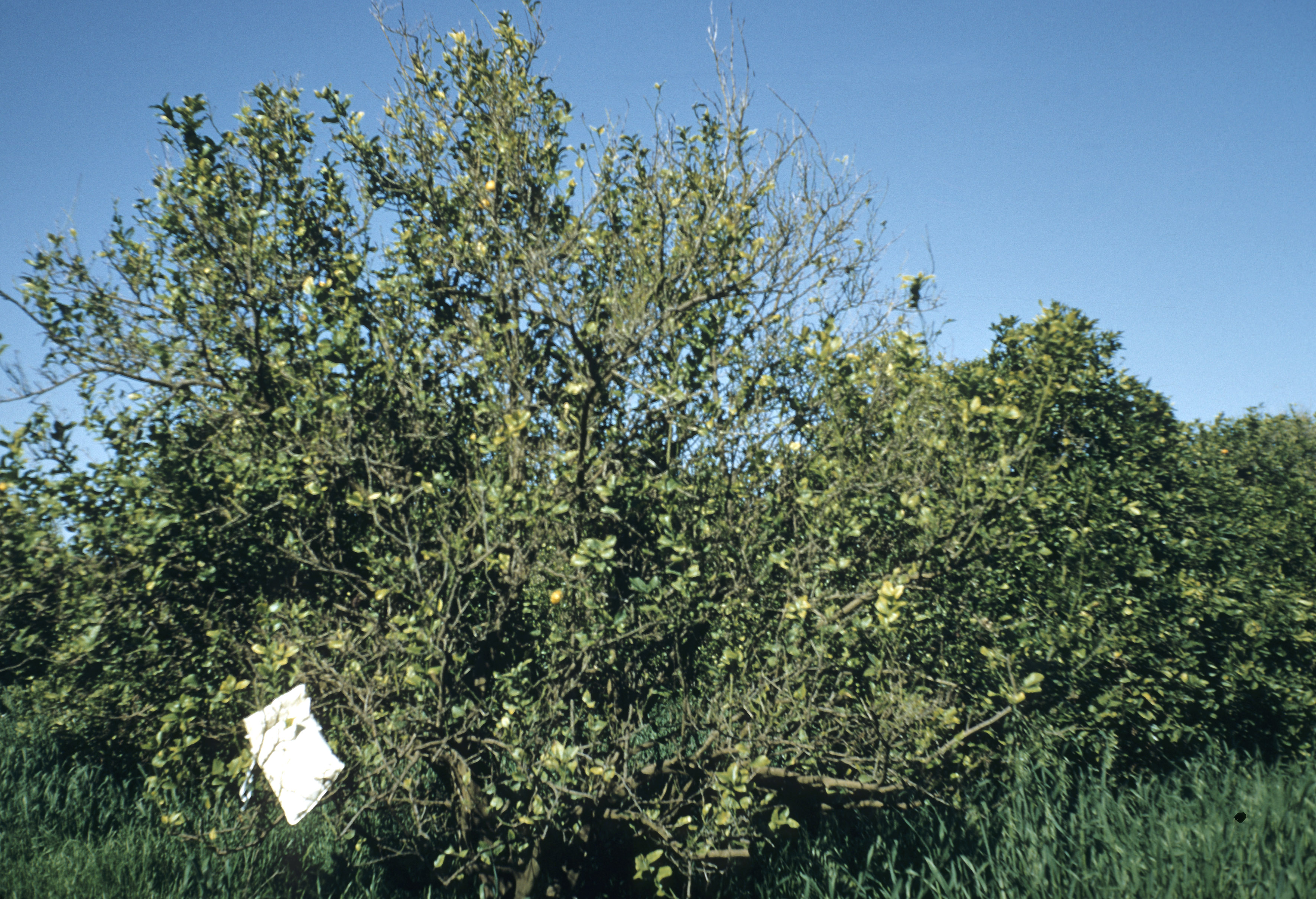
Trees suffer from iron deficiency in calcareous soils with high pH values. Under such conditions, iron required to form chlorophyll is unavailable to the plant.
Control
Irrigation must be carefully managed, as over-irrigating will make the condition worse. If only a few trees are affected, the application of an iron chelate to the soil under the trees might be worth a trial, but this treatment is uneconomic for a large block. Foliar sprays of either iron sulfate or iron chelate have usually proved ineffective.
Citrus stocks vary in their ability to use iron in alkaline soils. Poncirus trifoliata, which is more sensitive than sweet orange or rough lemon, should not be used. The Troyer citrange appears to have a tolerance to alkalinity similar to that of rough lemon. Cleopatra mandarin is the most tolerant of the available stocks and can be used for alkaline soils where drainage is not a problem.
Zinc deficiency
Symptoms
Zinc deficiency affects citrus growing in either acid or alkaline soils but is usually more severe with alkaline soils. Excessive use of phosphate fertilisers can accentuate zinc deficiency.
Leaves of zinc-deficient citrus are small, abnormally narrow and rather crowded on short stems, giving a bunched appearance (Figure 3). Areas between the main lateral veins are whitish yellow (Figure 4). This mottling, which first appears between the main veins, occurs in the young growth and persists as the leaf ages. Fruit tends to be small, rather elongated, pale and coarse. There is considerable dieback of the smaller twigs, with production of multiple buds and numerous small, weak shoots, so that the trees become bushy and stunted (Figure 5).
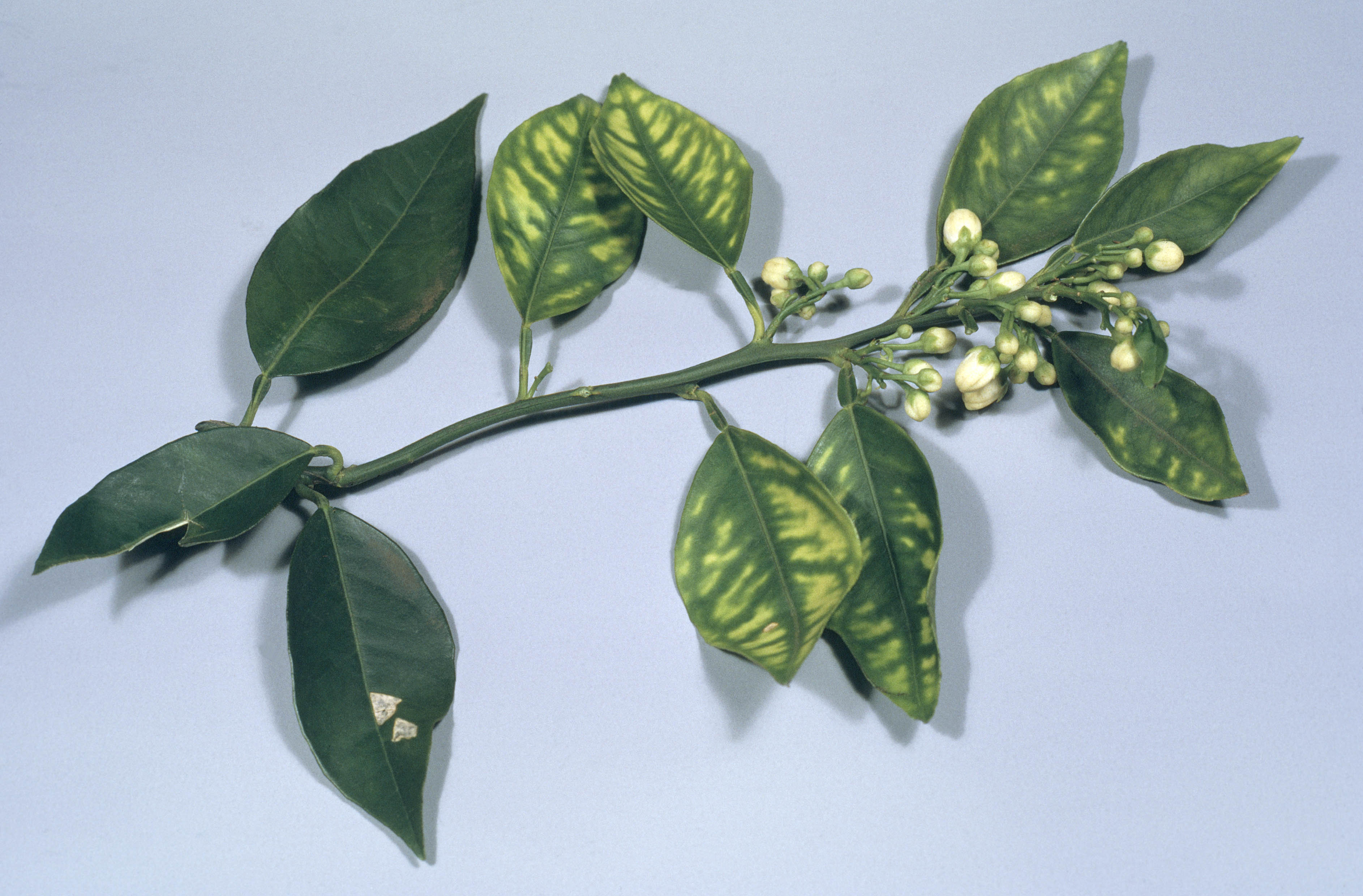
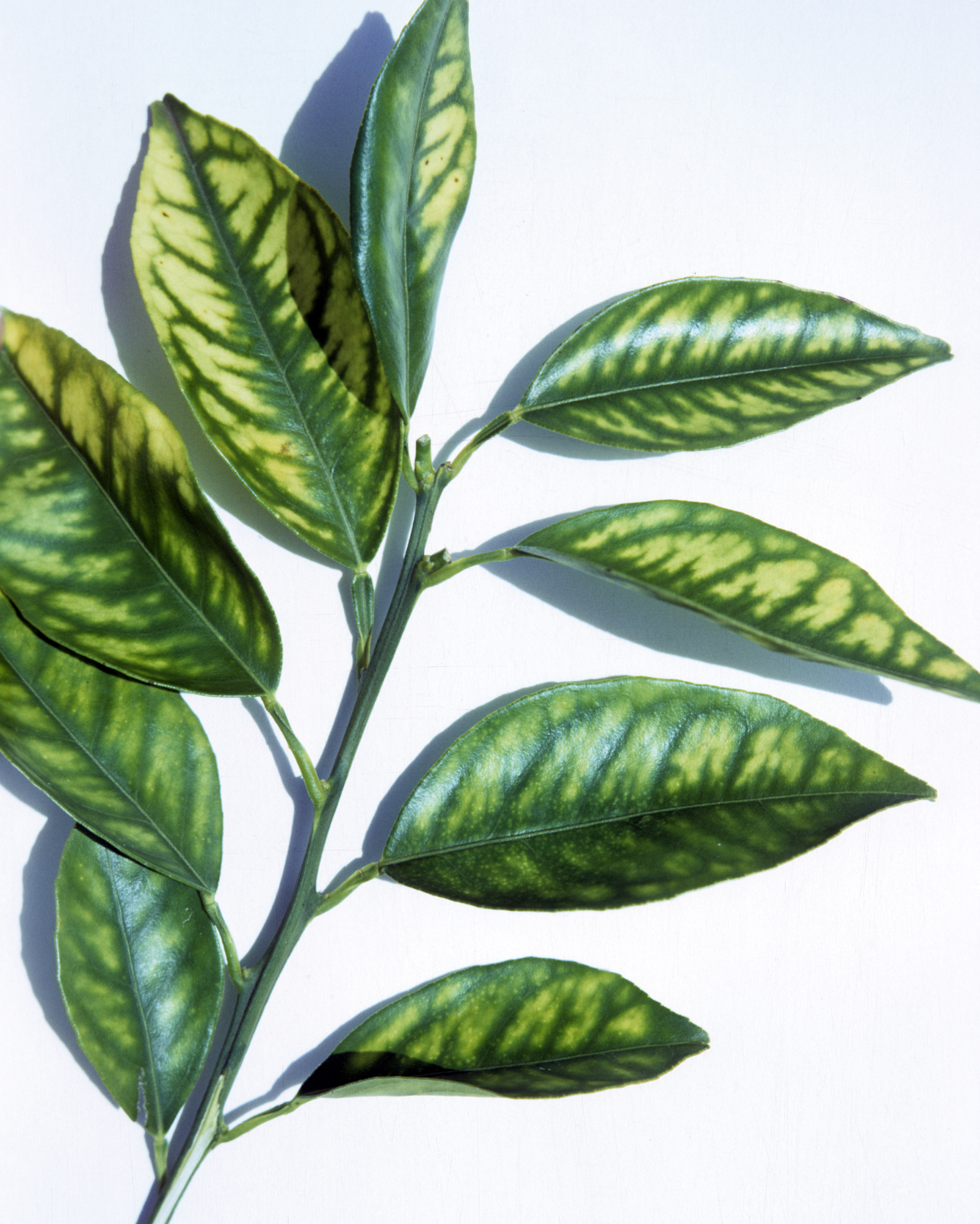
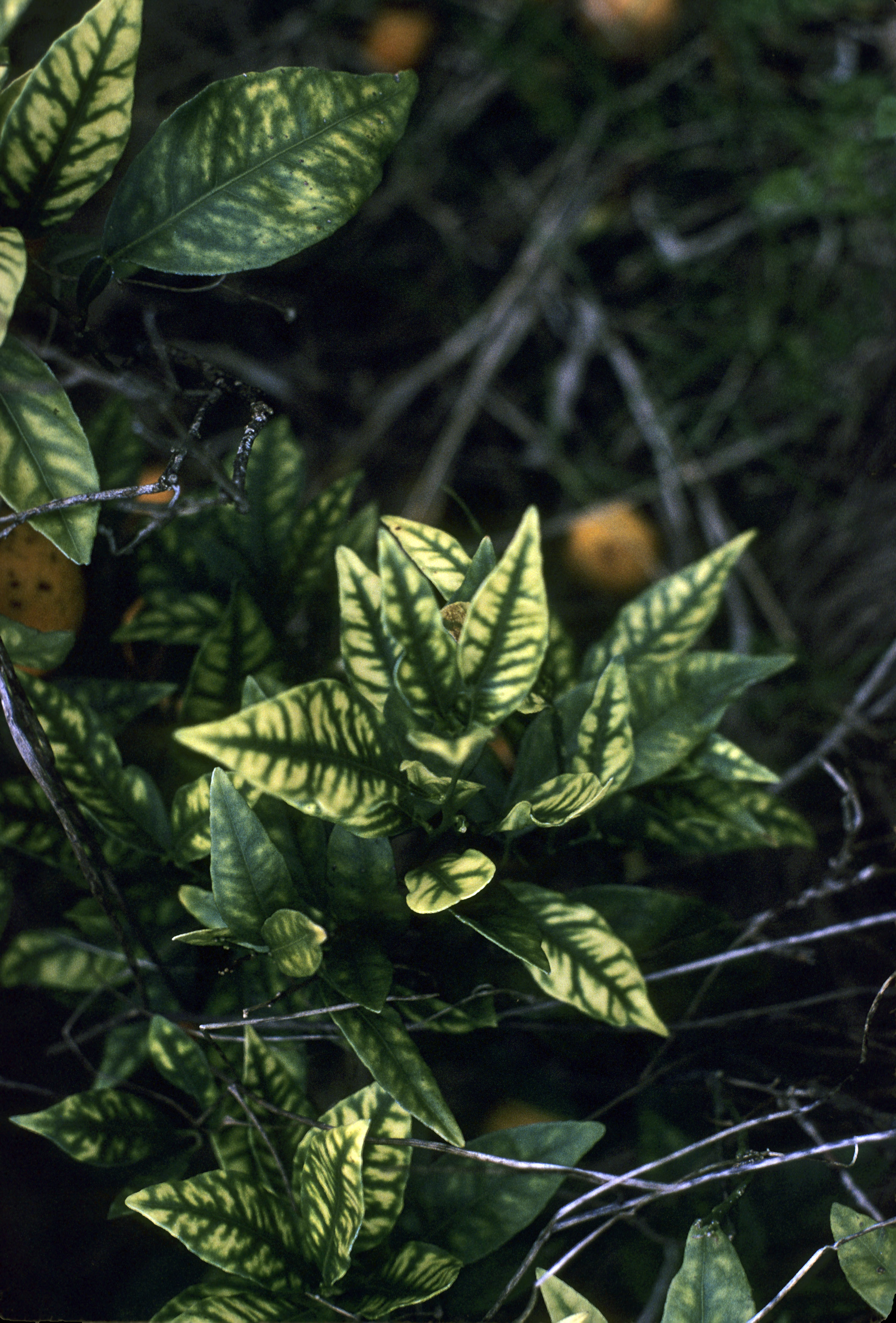
Mild early stages of zinc deficiency resemble those of manganese deficiency. At these stages leaf size and shape are normal and the mottled areas are pale green rather than the bright creamy yellow blotches seen in Figure 1. Zinc and manganese deficiencies can occur in combination and can be treated with a combination spray.
Control
Zinc deficiency is controlled by foliar sprays. Best results are obtained by spraying when the spring flush leaves are one-third to two-thirds developed. Spraying will need to be repeated annually, and in severe cases more than one spray per season might be required. One of the sprays should be timed to cover the partly developed spring growth. Poor correction will result from spraying when only old hardened leaves are on the tree.
Soil applications of zinc salts has not proved satisfactory for treating zinc deficiency.
Always read the label
Users of agricultural chemical products must always read the label and strictly comply with directions on the label. Users are not absolved from compliance with the directions on the label by reason of any statement made, or omitted to be made, in this publication.

